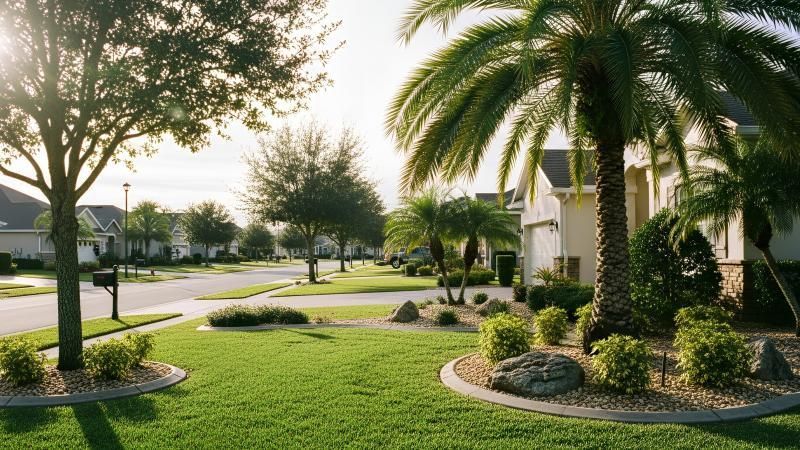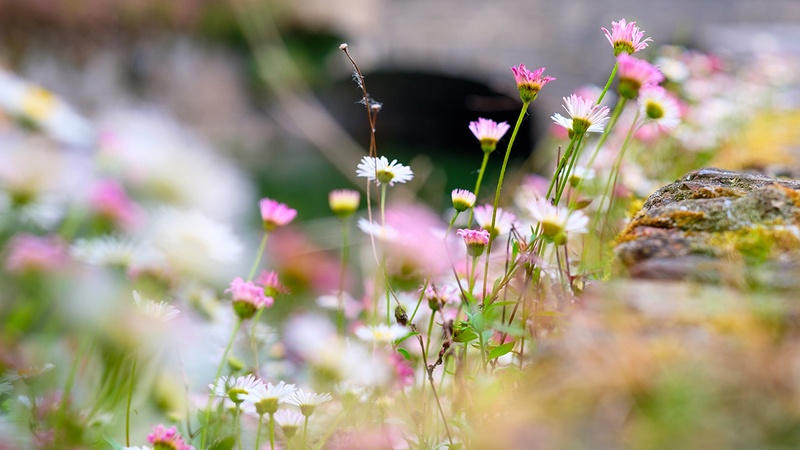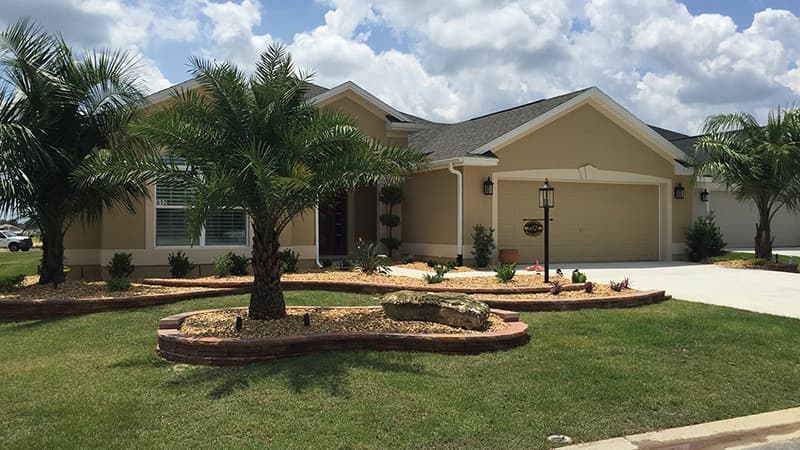If the condition of your lawn has gotten away from you, early fall is the time to get to work on giving your grass a new lease on life. The soil is still plenty warm from the summer, but the air is cooler – which creates perfect conditions for germination. When grass seed is planted in the fall, the seedlings have all of fall and spring to become established before the hot, dry summer weather sets in.
Evaluate the condition of your lawn. Determine if you should scrap the whole area and start over, revitalize your existing grass or just patch a few bare spots.
Patching Bare Spots in a Lawn
Sometimes bare spots can develop from foot traffic, pets, or weeds. You can reseed these areas quite simply:
- Mix 5 parts dry sand, 1 part commercial soil and 1 part grass seed. Add some slow release fertilizer to the mixture. The package instructions designate the amount. The ideal mixture is usually 1 cup of fertilizer in 5 shovelfuls of sand, one shovelful of soil and one shovelful of seed.
- Then, cut your existing vegetation close to the ground and loosen the soil with a rake. Remove all weeds.
- Cover the bare spot with the seed mixture to a depth of about 1/4 inch.
- Water liberally.
Revitalizing an Existing Lawn
- Mow your existing grass close to the ground and go over the entire area with a rake.
- Remove perennial weeds such as dandelions.
- Loosen hard packed areas where grass has died out.
- Work compost or humus into the top few inches of soil.
- Top dress the entire lawn with a mix of one part commercial manure, one part humus and two parts top soil. Apply the soil blend over the whole area about 1/4 inch deep.
- Work the soil into the existing grass.
- Water.
- Broadcast the seed evenly. Use a grass seed that matches your existing turf or contact your local cooperative extension service for the best type of grass for your area.
- Tamp down the area to ensure good seed to soil contact.
- Water with a sprinkler, so the area receives at least 1 inch of water. Place an empty tuna can on the ground to help measure how much water you’ve applied.
- Keep the area moist until the grass is established. Don’t let the soil dry out even for a day. To help retain moisture apply a thin, even layer of loose, weed-free straw mulch.
Planting a New Lawn
You can do the soil prep on this project in August and then sow the grass seeds in early fall.
- Mow the existing vegetation close to the ground and dig it under. This will eventually decay and add nutrients back into the soil.
- Remove stones and other debris.
- Grade the area to smooth it out. It doesn’t have to be completely level, just evened out.
- Work commercial manure or compost into the soil about 3 inches deep.
- Before sowing seed or laying the sod, wet the area. If you prepared the soil in advance, break up the surface. Remove any weeds that survived the initial preparation.
- If sowing seed, divide the area into large squares. Go over each square twice, the second pass at a right angle to the first.
- Water with a sprinkler, so the area receives at least 1 inch of water. Place an empty tuna can on the ground to help measure how much water you’ve applied.
- Keep the area moist until the grass is established. Don’t let the soil dry out even for a day. To help retain moisture apply a thin even layer of loose weed-free straw mulch.
Things to Consider When Sowing Grass Seeds
Sow grass seeds about 45 days before the first hard freeze in your area.
For even coverage of the grass seed use a drop spreader. If you don’t want to purchase a spreader, most garden centers will rent you one for the day.
Germination time for grass seed varies from 7-21 days, depending on soil temperatures and seed species. During this time be sure to keep the area moist. If the weather is dry, you may need to water lightly several times a day until the seedlings are about 1 inch tall.
Grass should be cut for the first time when it has reached 3-4". Mower blade should be sharp. After the third cutting, water 1-2 times per week, applying a total of 1" of water.
Most turf grass prefers a slightly acidic soil with a pH between 6.0 and 7.0. Test the soil with a simple pH soil kit to check if your soil is acid or alkaline. If acid (a pH of 6 or less), apply a fast-acting dolomite lime at the rate of 50 pounds per 1000 square feet. If alkaline (a pH of 7 or higher), apply a granular gypsum at the rate of 50 lbs per 1,000 square feet.





